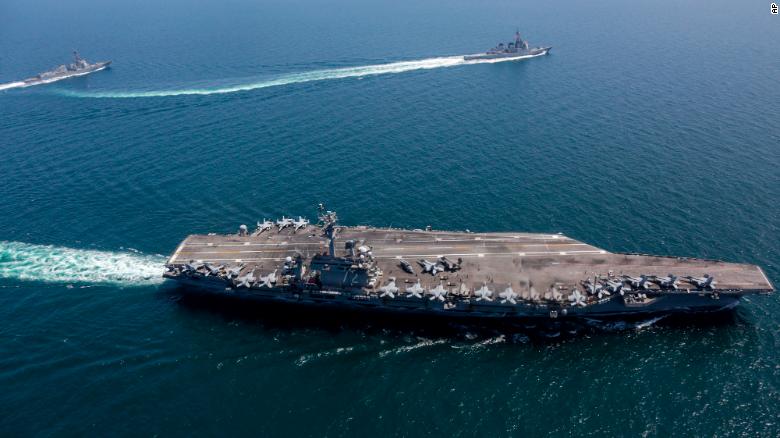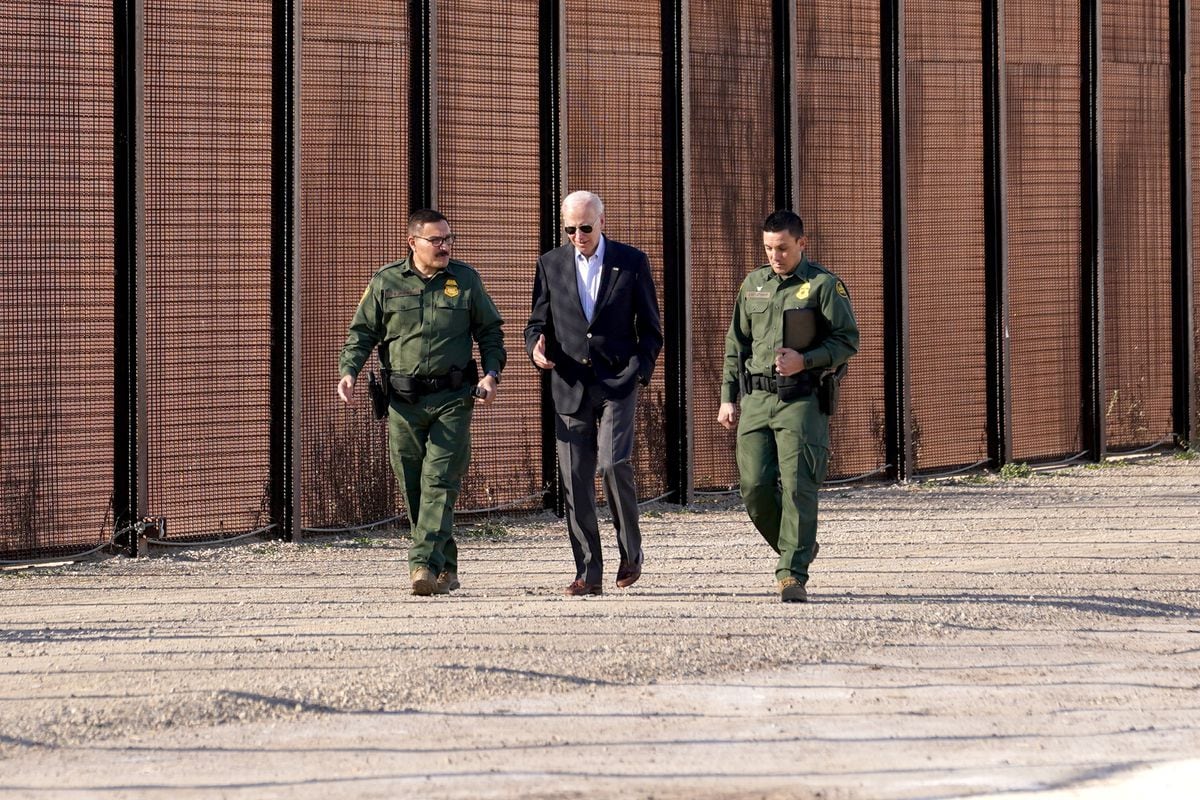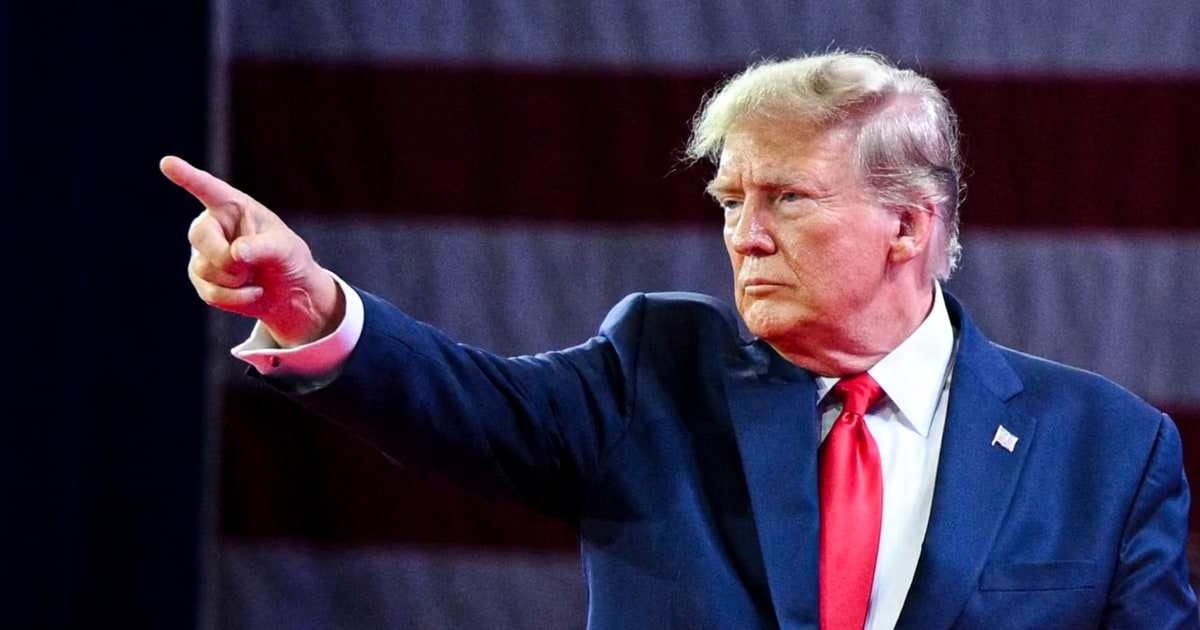5 Things: Kim Jong Un mobilizes the army for covid-19 2:46
SEOUL, South Korea (CNN) --
US President Joe Biden arrived in Asia on Friday to visit South Korea and Japan, with the region facing its most volatile security environment in decades.
Hot spots like Taiwan, North Korea, the South China Sea, the India-China border and the Kuril Islands have seen a Ukraine effect, as Russia's war accelerates regional security concerns while providing lessons that Major players in Asia are evaluating daily.
Biden affirms that Finland and Sweden have the "full, total and complete support"
of the USA in its attempt to join NATO
Here's a look at those key points and the military landscape Biden faces on each one.
Taiwan
The island of Taiwan is located just 177 kilometers from the coast of China.
For more than 70 years, the two sides have been governed separately, but that hasn't stopped the Communist Party of China (CPC) from claiming the island as its own, despite never having controlled it.
This has made other Pacific powers, especially Japan, wary.
advertising
Japanese officials have pointed out that 90% of their country's energy needs are imported through the water surrounding Taiwan, linking Japan's economic stability to Taiwan's autonomy.
The United States has also pledged to provide self-defense for Taiwan, though not to defend it with US troops.
That is where the lessons from Ukraine come into play, both for the United States and its allies, and for China.
Russian invasion of Ukraine raises concern in Taiwan 3:10
"Simply put, it will be very difficult for US leaders to convince China that they are willing to risk a war over Taiwan that could go nuclear," Peter Harris, an associate professor of political science at Colorado State University, wrote this week. , in a paper for the Defense Priorities think tank.
"This is especially true in light of President Biden's unequivocal refusal to send US troops to Ukraine due to the imminent threat of nuclear war with Russia," Harris wrote.
But according to Harris, NATO allies and much of the rest of the world have supported Ukraine, through sanctions on Russia and weapons for Ukraine.
That could make China wary of any moves on Taiwan for fear of actions nations in the region might take against Beijing, he says.
"China should be left in no doubt that Japan, Australia, South Korea, the Philippines and other countries would be forced to rethink their national security strategies in the shadow of an enlarged and aggressive Chinese state," Harris wrote.
And that will be part of Biden's mission over the next week: to unify the region around Taiwan as a deterrent to any Chinese belligerence.
North Korea
Kim Jong Un's regime has staged a record number of missile tests this year, and there are signs it may be preparing to test a nuclear weapon for the first time since 2017.
The missile tests come after negotiations between North Korea and the United States over Pyongyang's nuclear program stalled following failed summits between Kim and former US President Donald Trump.
"Some observers suggest that North Korea is intensifying the tests to draw Washington's attention and restart dialogue. There is more evidence that Pyongyang is focused on improving its military capabilities to deter, threaten and extort other countries," says Leif-Eric Easley, a professor at Ewha University in Seoul.
Biden Arrives In South Korea With Growing Fears Over Potential North Korean Missile Or Nuclear Test
That was a page in Russia's playbook before it ended up invading Ukraine, and it provides a lesson for the Korean peninsula, says Easley.
"Russian aggression demonstrates that the cost of war is almost always greater than the price of peace, not only because of lives shattered and resources expended, but also because leaders tend to overestimate their ability to achieve military and political goals, while underestimating the unforeseen long-term consequences," he says.
According to Easley, Biden can reduce the threat from North Korea by harnessing the strength of US alliances in the Pacific.
"Among the effective and plausible options for Seoul and Washington to strengthen deterrence are the re-establishment of combined exercises on the ground, better coordination of defense acquisitions, and regularization of trilateral security cooperation with Tokyo," it states.
The Kuril Islands, dispute in Asia
The Kuril Islands, called the Southern Kuriles by Russia and the Northern Territories by Japan, were captured by Soviet forces after Japan's surrender to the Allies in 1945.
The resulting disagreement over who has rightful ownership of the islands has soured relations between the two countries, contributing to their continued failure to sign a World War II peace treaty.
But the Russian invasion of Ukraine has raised tensions between Tokyo and Moscow to some of their highest levels since World War II.
This is because Japan has strongly condemned the invasion, largely toeing the Western line against Russia, which includes expelling Russian diplomats, imposing sanctions on Moscow and even donating supplies to the Ukrainian military.
This comes after Russia has increased its military profile in the Western Pacific, including testing missiles in the waters between Japan and Russia and joining the Chinese navy for an exercise that circumnavigates much of Japan.
What was the role of the Soviet Union in World War II: timeline and key battles
"Taking all of this into account, the perception of the threat from Japan on its northern flank has changed substantially," says Robert Ward, president of Japan at the International Institute for Security Studies.
And rising tensions in the north have created what Ward calls "an arc of risk" for Japan to its west, from the Kurils in the north, south with the North Korean missile threat, and further south with China. around Taiwan and around the Senkaku/Diaoyu Islands, claimed by both Beijing and Tokyo as sovereign territory.
This worries Biden because, through a mutual defense treaty, the United States is committed to defending any part of Japanese sovereign territory.
If it falters even the slightest in these areas relative to its No. 1 ally, it would heighten concern about US engagements in other parts of the world, including NATO allies who are still concerned about the next move by Russia in Europe.
The South China Sea
China's claim to almost all of the 1.3 million square kilometer South China Sea has been a continuing source of tension between Washington and Beijing in recent years.
But the war in Ukraine, along with rising tensions around Taiwan, North Korea and the Kuril Islands, have lowered the thermostat a bit in the South China Sea.
Collin Koh, a research fellow at Singapore's S. Rajaratnam School of International Studies, notes that by 2022, the US Navy appears to have scaled back its freedom of navigation operations (FONOPS), in which US warships sail near disputed islands occupied by China, with only one such operation in January.
soloThe aircraft carrier USS Abraham Lincoln, in the lead, and other warships sail in formation during a bilateral exercise between the United States and Japan in the Sea of Japan."It appears that the Biden administration may have chosen to change the previous militarized approach (of the South China Sea) to one more based on geoeconomics," Koh said.
He points out that at a recent White House meeting with the leaders of the Association of Southeast Asian Nations (ASEAN), economic, development and health commitments were reached, rather than military ones.
In fact, the closest thing to a security initiative was the dispatch of a Coast Guard vessel and a training team to the region, according to Koh.
But Russia's military struggles in Ukraine also have lessons for China, Koh said.
Russia has not achieved air superiority over Ukraine, and Koh said Beijing could easily face a similar problem in trying to protect the militarized islands of the Spratly Island chain in the South China Sea.
"The line of communication -- air and sea -- from the coastal hubs along southern China and these outposts would be too long, and vulnerable to interdiction unless they are able to secure air and naval dominance," he said. .
"Even if the Chinese may gain an initial advantage by seizing some areas (of the South China Sea), keeping them secure in the long term is uncertain," Koh said.
India-China, a real challenge for Biden in Asia
The decades-long standoff along the Line of Actual Control (LAC), the ill-defined border between India and China in the Himalayas, could be the most complex of the military issues facing Biden on his Asia trip.
A bloody clash between Indian and Chinese troops in the LAC in 2020 has pushed India, which has long relied on Russia as its main arms supplier, to move closer to the United States.
India has also aligned itself with the United States, Japan and Australia in the Quad, an informal grouping of countries that many see as an effort to counter China's influence in the Indo-Pacific region.
However, New Delhi's historically close ties to Moscow, and the need to keep Russia's oil and gas imports — as well as military supply chains — intact have caused India to refrain from imposing sanctions on Russia, something in what the other members of the Quad have been at the forefront of.
Harsh V. Pant, a professor at King's College London and director of the Observer Research Foundation in New Delhi, points to two factors in Ukraine that are likely to keep India tilted toward the United States.
Russia's attack on Ukraine reveals political flaws in Asia, especially India and China
One, the intelligence, surveillance, and reconnaissance provided by Washington and its allies have helped Ukraine stop and now push back Russia on the battlefield.
India has had a similar understanding with the US in monitoring and understanding Chinese military capabilities and what has happened in Ukraine will further that effort, says Pant.
And two, Russia's role as supplier of around half of India's military hardware is called into question.
"India will have to look very carefully at its hardware sourcing," says Pant.
"If Russia is so involved in its own wars, where are maintenance and spare parts (for India) going to come from?"
Washington and its allies are the most likely provider of both the weapons themselves and help in technology transfer for India to make its own modern weaponry, says Pant.
And that would be a likely path to agreement at the Quad leaders' meeting in Tokyo next week.
AsiaChinaJoe Biden









/cloudfront-eu-central-1.images.arcpublishing.com/prisa/KCOOBO35HRDXXHG2SR4IMWQ3FQ.jpg)